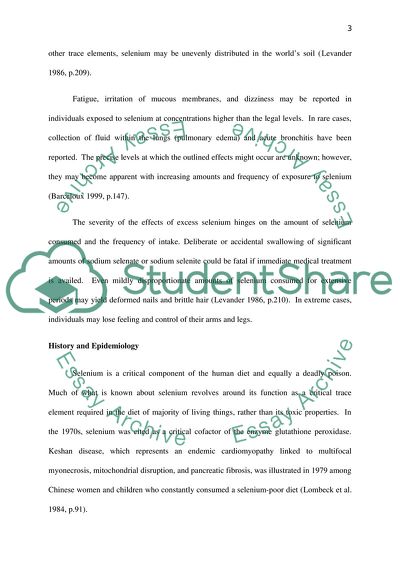Cite this document
(Toxicity of Selenium and Its Mechanisms on Children Health Coursework, n.d.)
Toxicity of Selenium and Its Mechanisms on Children Health Coursework. https://studentshare.org/health-sciences-medicine/1790947-toxicity-of-selenium-and-its-mechanisms-on-children-health
Toxicity of Selenium and Its Mechanisms on Children Health Coursework. https://studentshare.org/health-sciences-medicine/1790947-toxicity-of-selenium-and-its-mechanisms-on-children-health
(Toxicity of Selenium and Its Mechanisms on Children Health Coursework)
Toxicity of Selenium and Its Mechanisms on Children Health Coursework. https://studentshare.org/health-sciences-medicine/1790947-toxicity-of-selenium-and-its-mechanisms-on-children-health.
Toxicity of Selenium and Its Mechanisms on Children Health Coursework. https://studentshare.org/health-sciences-medicine/1790947-toxicity-of-selenium-and-its-mechanisms-on-children-health.
“Toxicity of Selenium and Its Mechanisms on Children Health Coursework”. https://studentshare.org/health-sciences-medicine/1790947-toxicity-of-selenium-and-its-mechanisms-on-children-health.


